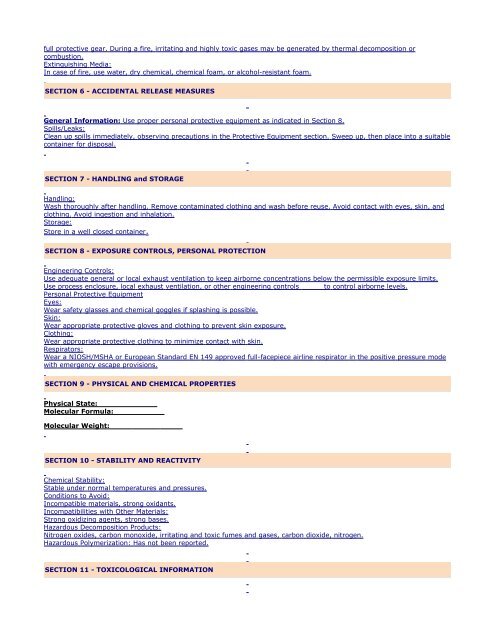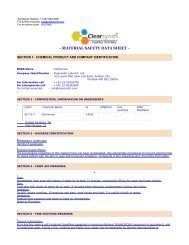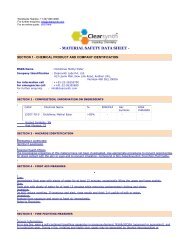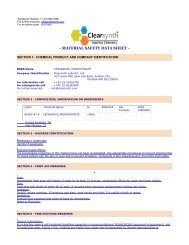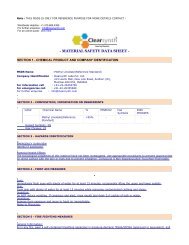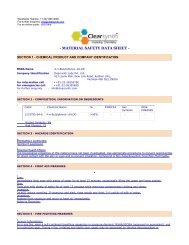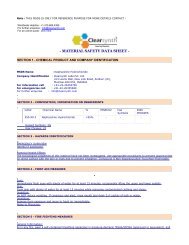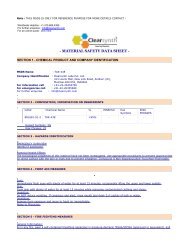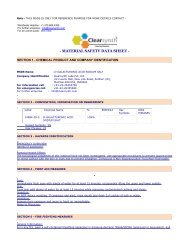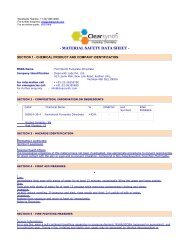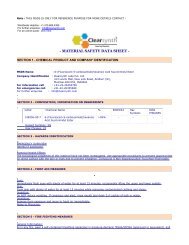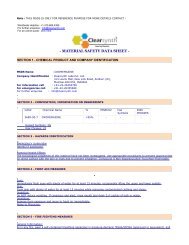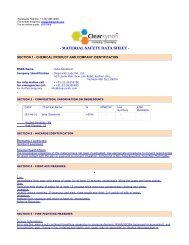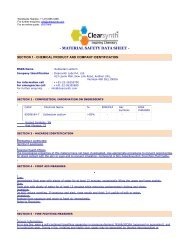FENOXANIL-Material Safety Datasheet - clearsynth
FENOXANIL-Material Safety Datasheet - clearsynth
FENOXANIL-Material Safety Datasheet - clearsynth
You also want an ePaper? Increase the reach of your titles
YUMPU automatically turns print PDFs into web optimized ePapers that Google loves.
full protective gear. During a fire, irritating and highly toxic gases may be generated by thermal decomposition orcombustion.Extinguishing Media:In case of fire, use water, dry chemical, chemical foam, or alcohol-resistant foam.SECTION 6 - ACCIDENTAL RELEASE MEASURESGeneral Information: Use proper personal protective equipment as indicated in Section 8.Spills/Leaks:Clean up spills immediately, observing precautions in the Protective Equipment section. Sweep up, then place into a suitablecontainer for disposal.SECTION 7 - HANDLING and STORAGEHandling:Wash thoroughly after handling. Remove contaminated clothing and wash before reuse. Avoid contact with eyes, skin, andclothing. Avoid ingestion and inhalation.Storage:Store in a well closed container.SECTION 8 - EXPOSURE CONTROLS, PERSONAL PROTECTIONEngineering Controls:Use adequate general or local exhaust ventilation to keep airborne concentrations below the permissible exposure limits.Use process enclosure, local exhaust ventilation, or other engineering controls to control airborne levels.Personal Protective EquipmentEyes:Wear safety glasses and chemical goggles if splashing is possible.Skin:Wear appropriate protective gloves and clothing to prevent skin exposure.Clothing:Wear appropriate protective clothing to minimize contact with skin.Respirators:Wear a NIOSH/MSHA or European Standard EN 149 approved full-facepiece airline respirator in the positive pressure modewith emergency escape provisions.SECTION 9 - PHYSICAL AND CHEMICAL PROPERTIESPhysical State:Molecular Formula:Molecular Weight:SECTION 10 - STABILITY AND REACTIVITYChemical Stability:Stable under normal temperatures and pressures.Conditions to Avoid:Incompatible materials, strong oxidants.Incompatibilities with Other <strong>Material</strong>s:Strong oxidizing agents, strong bases.Hazardous Decomposition Products:Nitrogen oxides, carbon monoxide, irritating and toxic fumes and gases, carbon dioxide, nitrogen.Hazardous Polymerization: Has not been reported.SECTION 11 - TOXICOLOGICAL INFORMATION


